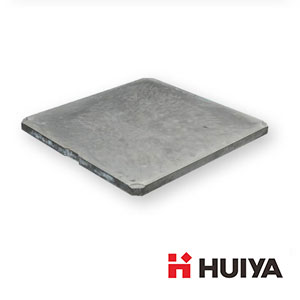Creating a transition from the tile to the carpet is the final step in the vast majority of tile installation projects. This step may also be omitted. This step is optional and can be skipped if desired. On the other hand, it is also one of the things that can disrupt the flow of your tile installation project (the other thing that can disrupt the flow of your tile installation project is not using the appropriate tile installation tools). In either case, the flow of your tile installation project could be negatively affected. In either scenario, the flow of the project you are working on to install tiles could be negatively impacted. In addition to taking into account the specifics of the various flooring options, you need to make certain that the edges of the various flooring options will not pose a risk of tripping for the people who will be living in the building. This is something that needs to be done regardless of whether or not you consider the specifics of the various flooring options. In addition to this, it is imperative that you take into consideration the specifics of the various flooring options themselves. You most certainly possess the capability to do that; however, if you were to do so, you really couldn't refer to yourself as a professional tile installer, could you?
Now that we've gotten that out of the way, let's move on to the next topic, which is going to be what you need to know about transitioning from tile to carpet and how to choose the best transition options for tile to carpet. Because the activity seems to be a simple one, this might present a challenge for you. After the tile has been installed, the carpet can then be trimmed so that it fits precisely within the boundaries of the tile, correct? That ought to put your mind at ease.
If you do that, you will undoubtedly end up with a transition that is untidy and awkward looking. There is no way around this. This outcome can under no circumstances be avoided.
You should instead roll the carpet's edge away from the tile until it is flush with the edge of the tile. This should be done until the carpet is completely removed. Make sure that the tack strips are installed at a distance of approximately one and a half millimeters from the edge of the tile when you are installing them. After you have finished installing the tiles, you can roll the carpet over the strips and then press it down onto the nails that you hammered into the subfloor earlier. This will secure the carpet to the subfloor. The procedure that has been described up until this point is about to reach its conclusion with this step. Adjust it so that PP Carpet Tiles looks like this. This will ensure that it continues to remain in the position it is in now.
It's possible that selecting the appropriate transition strips for a tile installation project and then putting them in place won't be the most exciting part of the work. If this is the case, then the next most exciting part of the work will be choosing the tiles themselves. You should keep this in mind moving forward. There was not a single person whose heart rate significantly increased in response to the sight of a T-bar or a baseboard. Is it not true that the tiniest of particulars are where true beauty can be found in the big picture?
Now that we have established the significance of this topic, let's talk a little bit about how important it is to find the right carpet to tile transition strip for your particular flooring situation. Let's start by saying that it is important to find the right carpet to tile transition strip.

When it comes to moving from tile to carpet, the tried-and-true method is to utilize reducers that are designed for both carpet and hard surfaces. These reducers can smooth the transition from tile to carpet. These kinds of strips not only ensure a smooth passage, but they also subtly let you know when there is an upcoming change in height or flooring. They do both of these things very effectively. They accomplish this in a manner that is quite refined.
Transition strips made of metal can be purchased in many different metal finishes, some of which include pewter, aluminum, and brass. These are just some of the many different metal finishes that are available to choose from. Each one is offered in a variety of different finishes, and the overall design of the tile floor can be improved by employing any one of these finishes, which are all available.
Vinyl: The vast majority of tile installers agree that installing vinyl strips is the most cost-effective option that is currently available. They believe that installing vinyl strips is the most cost-effective option. This is due to the fact that they have in their possession.
THE BEST TILE TO CARPET TRANSITION OPTIONS
During the process of tiling a floor, two different types of flooring materials will inevitably come into contact with one another at some point. This is an unavoidable circumstance. This is just one of the many inflexible aspects of the process, but it's still important to note. The answer can be found in the vast majority of situations by employing an approach that is comparatively uncomplicated.
However, the number of transition options that are available between tile and carpet increases when the two types of flooring are placed in close proximity to one another as opposed to in separate rooms. The following guide will provide you with the information you need to know about both carpet and tile flooring, which will allow you to make the transition from one to the other in a smooth and seamless manner.
The Tuck-In Method's Detailed Step-by-Step Procedure
The tuck-in carpet transition to tile is the most common method, and it is likely one that you have used in the past an uncountable number of times. The method involves tucking the carpet underneath the tile. It is possible to install it even though it is advised to do so after the tile floor has been laid, but you can still do so. The only thing that needs to be done is to adjust the contours of the carpet that is already there so that there is room for the transition strip. Throughout the entirety of the installation process, this distance ought to be preserved. You are going to need to cut the carpet along its edge in order for it to be able to fit flush against the tile and reach all the way to the edge of the room.
If there is already a carpet there, you will need to trim it so that it is just a few inches longer than the area where you want to meet the tile. If there is not already a carpet there, you can skip this step. You can skip this step entirely if there is not already a carpet in that location.




